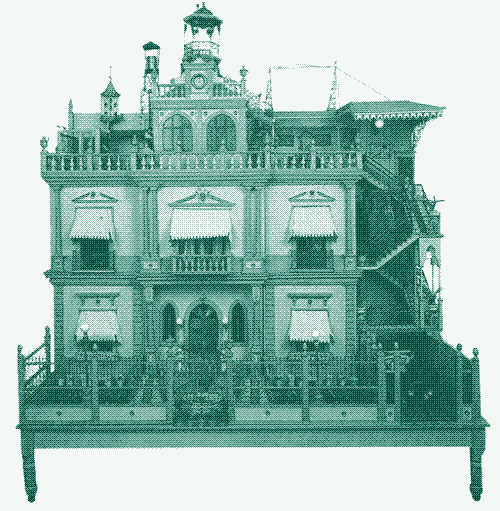
How did ladies spend their time when married to extremely rich men in an era before television, speed-dating and summer festivals? You build a dolls’ house (a “dollhouse” if you are American). These incredibly detailed miniature houses and interiors were constructed between the 17th and the early 20th century, mostly by wealthy ladies who often paid artists and craftsmen to make all kinds of objects and parts for them.
Some of these dolls’ houses took more than 20 years to build and ended up being just as expensive as real houses. Aside from their picturesque charm, they are a historical record of upper-class daily life in earlier times, before the invention of photography.
Online collections of doll’s houses and cabinet houses (a set of miniature rooms built into a cabinet) can be found at the V&A Museum of Childhood in London (UK), the Dolls’ House Museum in Essex (UK), the Puppenhausmuseum in Basel (Switzerland) and the Great American Dollhouse Museum in Kentucky (US). Another small but surprising collection on flickr displays some interesting pictures of lesser known doll’s houses (like the Mexican dolls’ house above).
The most famous is the Queen Mary’s dolls’ house (more pictures here, here and below), built from 1920 to 1924 by Sir Edwin Lutyens for the English Queen. The house includes real plumbing infrastructure (you can flush the toilet), the books contain the exact written text of their larger counterparts, and the bottles in the wine cellar have wine in them.
The only surviving dolls’ houses from the 17th century were made by Petronella Oortman (it includes a hidden cellar) and Sarah Ploos van Amstel (her story here). The builder of the third one is unknown (the Stromer house).
The Art Institute of Chicago has an online gallery of 68 miniature rooms, all built in the 1930s and showing interiors starting from the 13th century up until the decade they were built (see picture below).
At the end of the 19th century, toy makers started to mass produce dolls’ houses and accessoiries, aimed increasingly at children. Jennifer McKendry’s website provides an extensive overview of mass produced doll’s houses and furniture from 1890 to 1990 (composed of an illustrated history and a picture gallery).